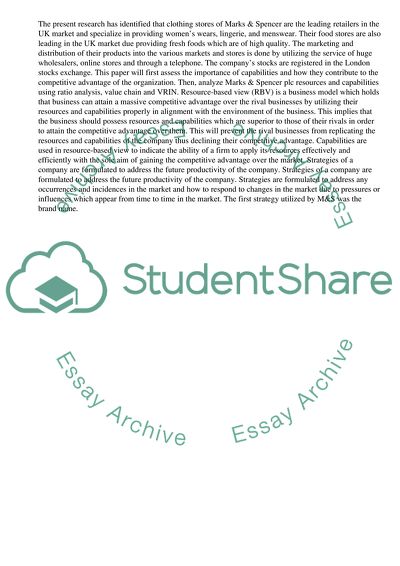Cite this document
(“Resource Based Analysis of Marks & Spencer Plc Essay”, n.d.)
Retrieved from https://studentshare.org/business/1642400-you-are-to-undertake-a-resource-based-analysis-of-an-organisation-with-which-you-are-familiar-as-part-of-this-analysis-you-should-use-appropriate-tools-and-frameworks-to-identify-and-evaluate-the-extent-to-which-your-chosen-organisation-has-a-sustainable
Retrieved from https://studentshare.org/business/1642400-you-are-to-undertake-a-resource-based-analysis-of-an-organisation-with-which-you-are-familiar-as-part-of-this-analysis-you-should-use-appropriate-tools-and-frameworks-to-identify-and-evaluate-the-extent-to-which-your-chosen-organisation-has-a-sustainable
(Resource Based Analysis of Marks & Spencer Plc Essay)
https://studentshare.org/business/1642400-you-are-to-undertake-a-resource-based-analysis-of-an-organisation-with-which-you-are-familiar-as-part-of-this-analysis-you-should-use-appropriate-tools-and-frameworks-to-identify-and-evaluate-the-extent-to-which-your-chosen-organisation-has-a-sustainable.
https://studentshare.org/business/1642400-you-are-to-undertake-a-resource-based-analysis-of-an-organisation-with-which-you-are-familiar-as-part-of-this-analysis-you-should-use-appropriate-tools-and-frameworks-to-identify-and-evaluate-the-extent-to-which-your-chosen-organisation-has-a-sustainable.
“Resource Based Analysis of Marks & Spencer Plc Essay”, n.d. https://studentshare.org/business/1642400-you-are-to-undertake-a-resource-based-analysis-of-an-organisation-with-which-you-are-familiar-as-part-of-this-analysis-you-should-use-appropriate-tools-and-frameworks-to-identify-and-evaluate-the-extent-to-which-your-chosen-organisation-has-a-sustainable.


